There is nothing like the whimsy of a mobile. Watching objects sway and dance in a mobile is calming and pretty to look at. But here’s a little secret….mobiles are also full of engineering! Oh yes, that sweet DIY mobile you are making is chock full of opportunities to learn about some basic engineering/physics principles including tension and the center of gravity. Read on to find out how!
This post contains affiliate links.
Engineering for Kids: Twirling Twig Mobile
Materials
- Yarn Sticks like the ones we made here
- Yarn/twine/string
- Scissors
- Small rock or pinecone
Instructions
Note: This mobile can be made from sticks and twigs that are not yarn wrapped too!
- Step One Assemble your yarn sticks. Chose three longer sticks that are about the same size that can form a triangle.
- Step Two Overlap the ends of two sticks at a roughly 60-degree angle. Cut a piece of string and knot it around the two twigs at the joint. Wrap the joint tightly and knot the end to secure in place.
- Step Three Add the third stick to form a triangle and wrap and secure the joints as directed in Step Two.
- Step Four Assemble your twigs in the order you would like them to hang. We arranged ours by size with the longest sticks at the top.
- Step Five Cut a piece of string about 6” longer than you want the mobile length to be. Tie one end to the center of the bottom chord of the stick triangle.
- Step Six Place the first stick about 2” below the bottom chord of the triangle. Wrap the long string around the center point of gravity of the stick and tie a knot.
- Step Seven Important! Test your mobile after adding each stick. Hold up the triangle with one hand and pull down on the string with the other hand. You want your stick to be suspended roughly parallel to the ground. You need to pull the string taut to test this! If the stick is hanging at an angle loosen the knot and move it over slightly to find the rough center of gravity for the stick.
- Step Eight Repeat Step Seven for the remaining sticks you are hanging.
- Step Nine Add a weight to the end of your mobile! We added a rock but you can also add a pinecone or other decorative element as long as has some weight to it. This will help keep the string taut.
- Step Ten Add a string to the top of the mobile and hang it!
Want to see how much the tension on the string affects the way the sticks hang? Check out the demonstration images below. See how much straighter the whole mobile hangs when their is a weight (rock) on the bottom?
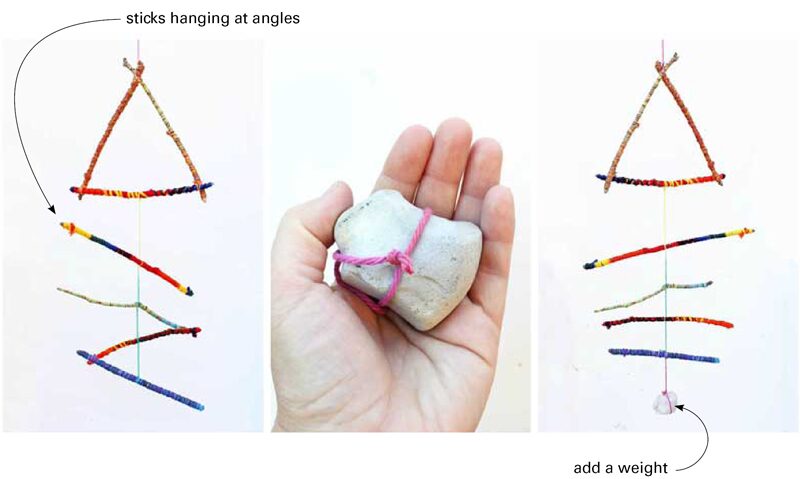 You’re done! Watch those twigs twirl in the breeze!
You’re done! Watch those twigs twirl in the breeze!
Tips
If your sticks are still not hanging straightish when the center string is held in tension then try the following steps on each stick that is hanging at too much of an angle:
- First try adjusting the string to one side or the other.
- Make sure the knot is tight enough to hold the string, a loose loop will not hold the stick in place.
- Try twisting the stick at the knot to move the knot to either the top or side of the stick. If the knot is positioned on the bottom of the stick it will not hang properly.
Engineering at Work
Okay so while I love mobiles for their fanciful design I love them even more because they are wonderful demonstrations of some basic engineering principles. Here are some physics and engineering concepts you can talk about with respect to mobiles:
- Center of gravity The center of gravity or mass is the point at which an object is perfectly in balance. This is not necessarily the middle point of an object if the object is not uniform in size. You may notice that sticks that are straight and roughly the same circumference throughout will have their center of gravity at the stick midpoint. But if you are working with any sticks that are bent or not uniform in shape, the center of gravity will be off to one side. For more information on the center of gravity check out this wikipedia article.
- Tension and Compression The other secret to this mobile is the concept of tension. String and other cable like materials are wonderfully strong in tension but awful in compression. Tension is a force that pulls on an object. Compression is a force that pushes on an object. When you pull a string it become tight and can carry loads; when you push in a string it can’t hold a thing but instead bunches up. The mobile string gets taut the more weight is added on the bottom. When it’s not taut, the sticks tend to hang at angles but when the string is pulled tightly they should hang roughly parallel to the ground. See the demonstration image above.
- More about Tension & Compression As I mentioned, cable works well in tension but not in compression. So what materials are the opposite i.e. work well in compression but not in tension? Concrete and stone. Ever wonder why you see buildings made of concrete with metal rebar embedded in the concrete? Well, concrete is amazingly strong when you push on it but if you were strong enough to pull it apart it would crumble. Enter rebar. Rebar are steel rods inserted as framework within concrete structures. Rebar, like cable, is super strong when you pull on it but bends if you push on it. Pair it with concrete and you’ve got the perfect match of materials to perform well under BOTH compression and tension.
Looks Like
Cable Bridges. There are two types of cable bridges: Suspension bridges and Cable stayed bridges. Most of us are familiar with suspension bridges, which essentially consist of two towers with main cables suspended between the towers and smaller cables holding up the horizontal sections of the bridge. Cable stayed bridges are similar but instead of having two main cables from which smaller cables hang, they have large cables directly anchored to the ground/bridge surface. Both types of bridges rely on the principle of tension and the fact that metal cable is very lightweight in relation to the loads it can carry when it is held taut. Modern day bridges which are capable of spanning extremely long distances would not exist without the exploitation of this concept. The San Francisco Bay Bridge which is made up a number of suspension bridges connected together, is almost 4.5 miles long! For more information on bridges start with this great explanation on wikipedia.
Conclusion
I bet you never thought a DIY mobile was actually a engineering project…well now you know!
Want more engineering for kids delivered in fun projects? Try these ideas:
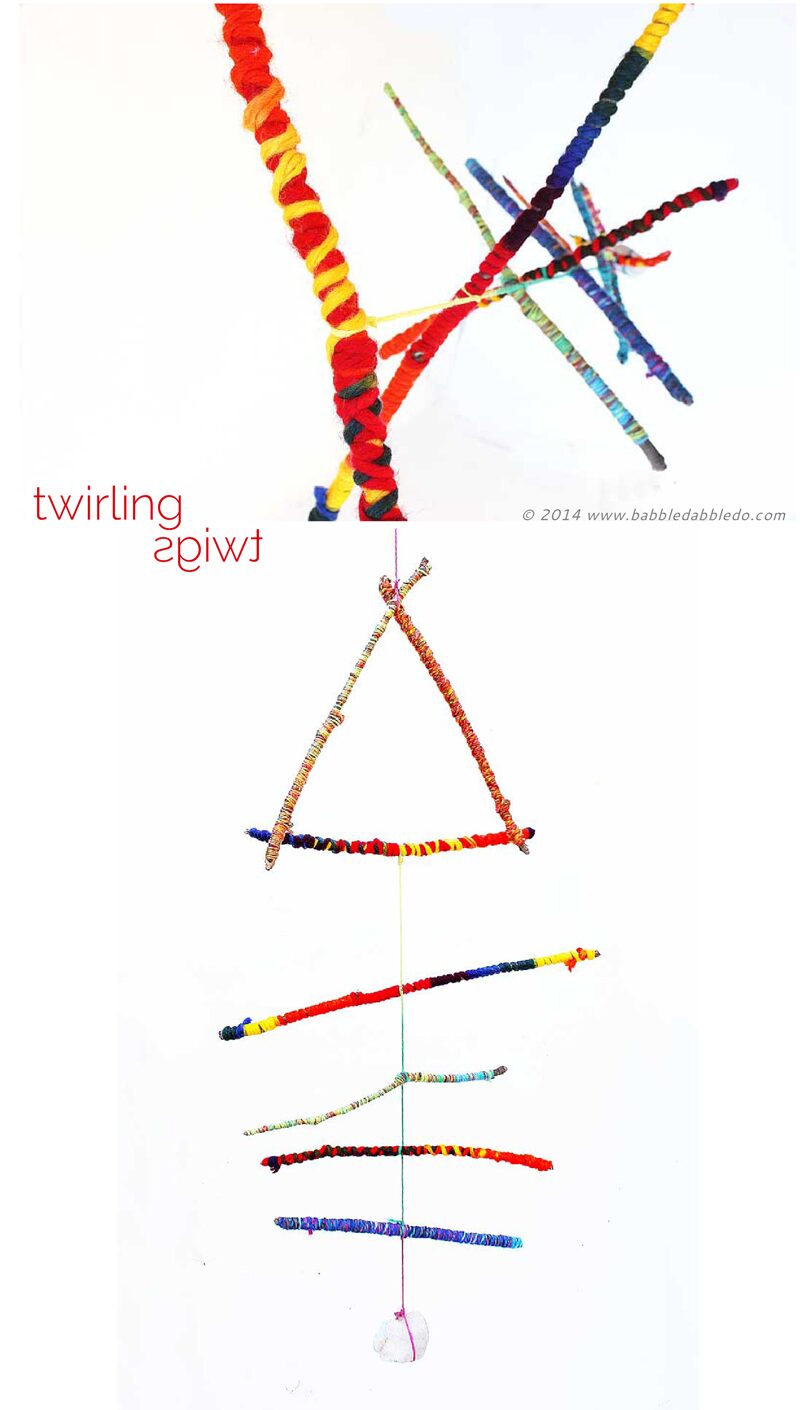
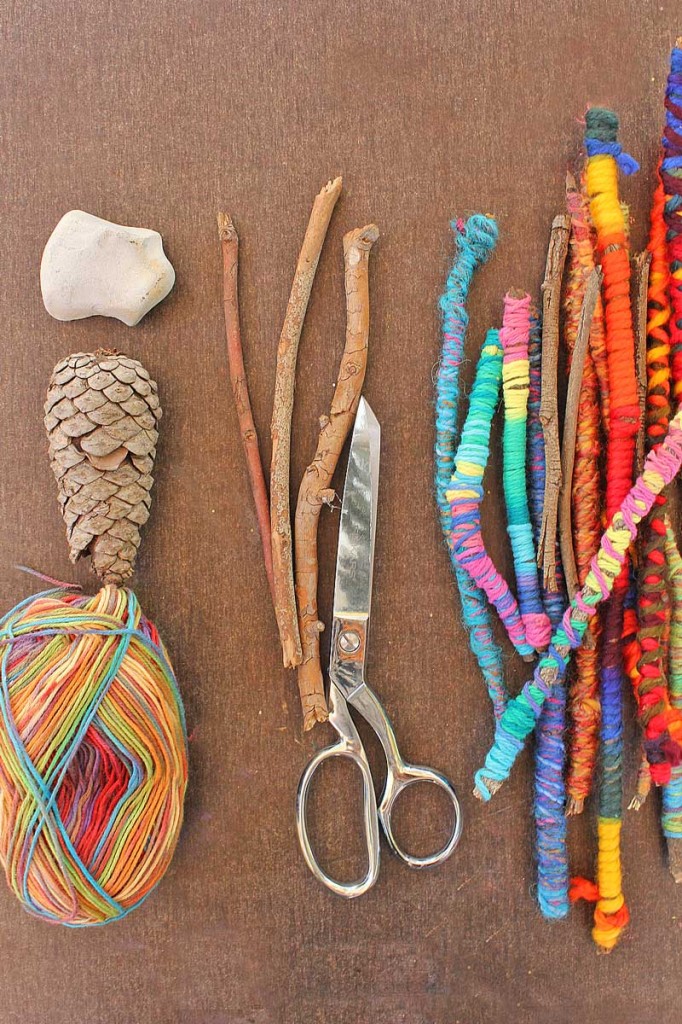


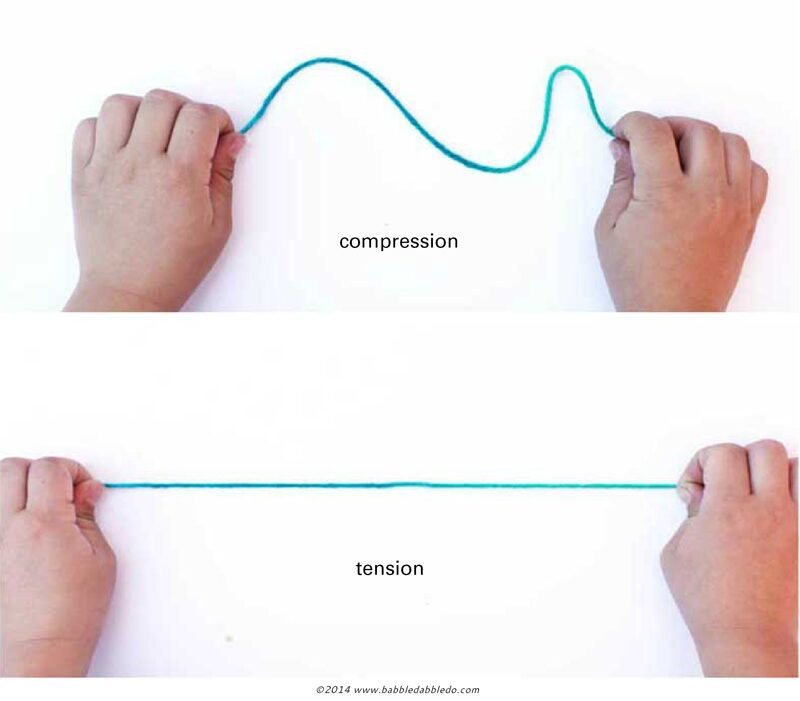
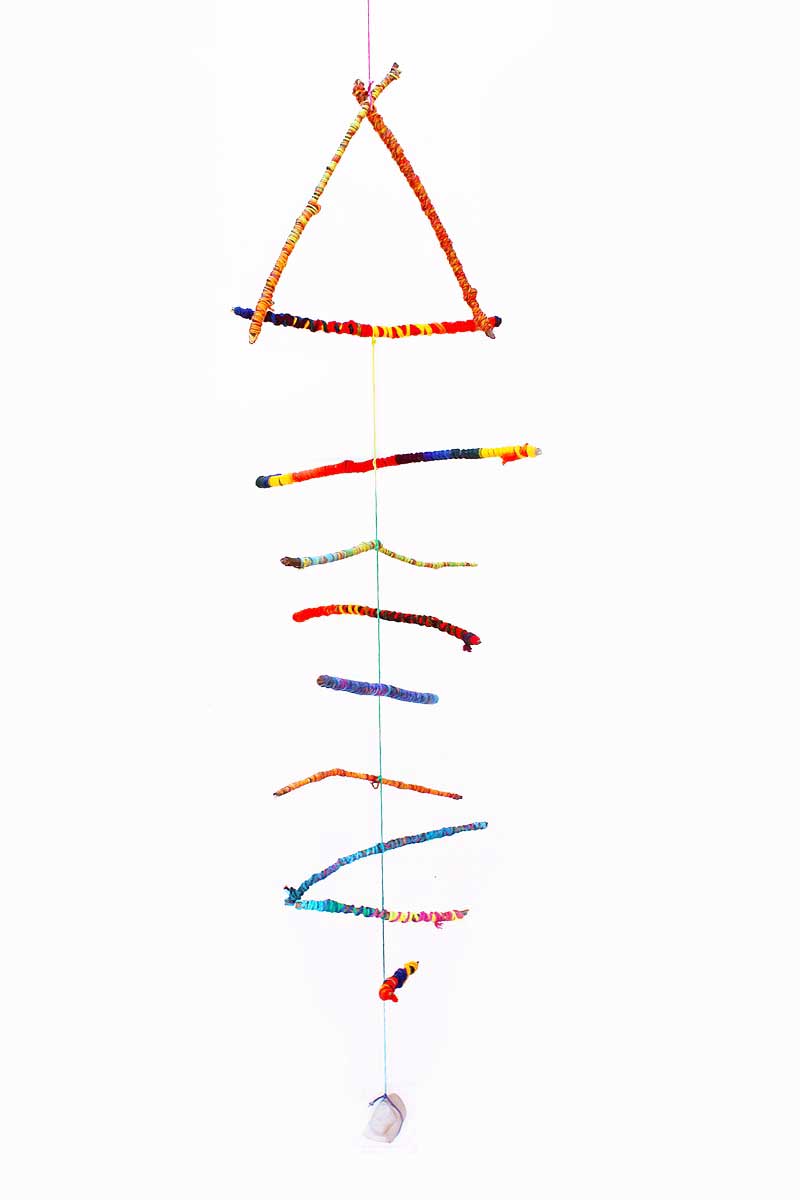
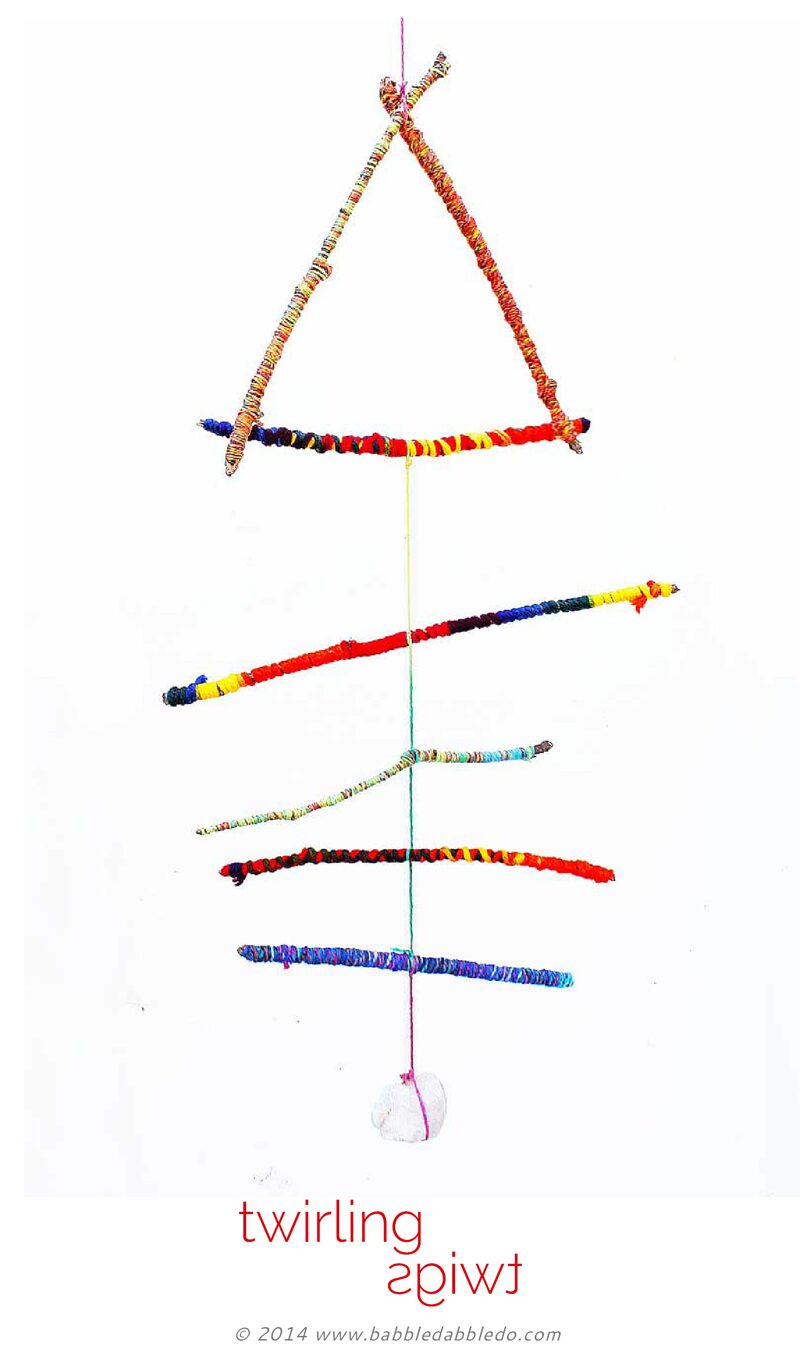
Simple but inventive and you can use the scraps of wool, yay! 🙂
Yay!
Thank you for sharing your project.
I am going to make a few of these for my yard.
So happy to hear it!
love your web page
Thanks Linda!
Love this idea! Can’t wait to try it out with my kids and hang it under the tree in the yard!
Shared on our pinterest page,
thanks!
Linda
http://www.CooCooLooo.com
Thanks so much Linda!
Ana, que hermoso y fantástico!! Gracias, me encanta!
Thank you!
These are so lovely…lots of good skills too xx
Thanks Sarah!